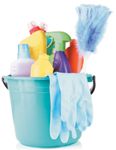7 tips to fill down times at your veterinary practice
The schedule is only half full and the day is dragging. But there's lots to do to help the patients in your care if you know where to look.
Check out this quick chart of tasks from Brian Conrad, CVPM, practice manager for Meadow Hills Veterinary Center in Kennewick, Wash., and choose a few you're trained to do to fill down times in the schedule and help the pets in your care.
Practice patience with patients
Go ahead, cuddle them. The pets in your care can never have too much attention. And while you're at it, you can make sure each animal is clean, warm and dry, take their weight and temperature, take them on potty walks, prepare medications to send home with clients and ask team members what else you can do to lend a hand.

THINKSTOCK_MIKKI BEYMER, GETTY IMAGES/SCOTTTALENT, GREEN COUNTRY VETERINARY HOSPITAL, SAPULPA, OKLA.
Build the bond with bandanas
Bella and Brutus prance with an extra spring in their step when they're stylishly adorned in their brand new bandanas. Send these precious pooches home with flair by cutting bandanas into three sizes—small, medium and large—to send home with patients.

Dive into dental carts
Keep pets' bright whites sparkling. Check your stock of dental diet samples, oral health chews and other product giveaways. And make sure to label and bag products according to the pet's size.

Clean up, clean up—put your things away
Try the white glove test—do you see dirt? When you're down on four paws, what do you see? Then take another gander from the client's eye view. What can you spiff up? To get started, clean exam rooms. Wipe down every surface, including clinic doors, cabinets, counter tops, drawers, shelves, floors and cages. Then wipe down the lab and remove blood from centrifuges. And keep the laundry moving.

THINKSTOCK_BELCHONOCK, GETTY IMAGES/SARA SHOWALTER, GETTY IMAGES/HONG LI
Strive to sterilize
Help the rest of the clinical team by pitching in to keep your surgical suite and other areas of the hospital in tiptop shape. For example, if you're trained to do these tasks you can clean, vacuum and mop the surgical suite, clean surgical instruments, put surgery packs together and run the autoclave.

Love your laboratory
The TLC you give this area keeps the day running smoothly and means pets get fast, accurate results when the schedule picks back up. So take a minute to clean microscope lenses of oil, using wipes and alcohol. Collect abandoned blood tubes and make sure they're packaged and ready to go. And dispose of all unneeded slides and blood and urine tubes.

Help out with handouts
How to house train your dog, help for chronic intestinal disease and tips to recognize the signs of osteoarthritis—we've got handouts for that and much more at dvm360.com/forms. So restock your forms in the waiting area. And place new ones in the treatment area, including hospital day sheets, surgery sheets and home care instructions.
